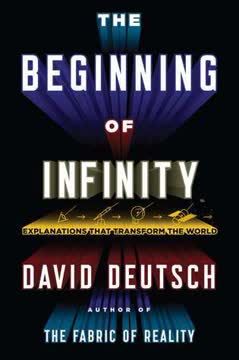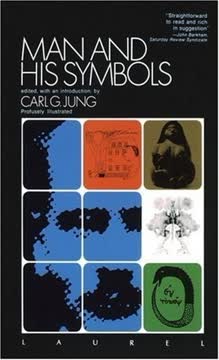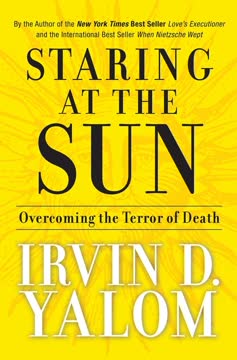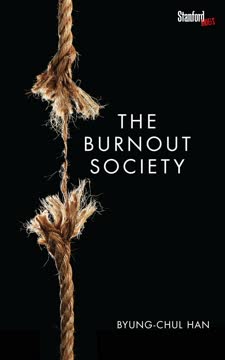نکات کلیدی
1. آزادی واقعی نیازمند رهایی از شرایط اجتماعی است
شرایط اجتماعی تفکر ما را محدود میکند. از بدو تولد، ما تحت تأثیر فرهنگ، مذهب، آموزش و هنجارهای اجتماعی خود قرار میگیریم. این شرایط چارچوبی را ایجاد میکند که از طریق آن جهان را تفسیر میکنیم، اغلب بدون اینکه تأثیر آن را درک کنیم. این امر بر باورها، ارزشها و رفتارهای ما تأثیر میگذارد و تعصبات و محدودیتهای ناخودآگاه ایجاد میکند.
رهایی نیازمند آگاهی و پرسشگری است. برای دستیابی به آزادی واقعی، ابتدا باید شرایط خود را شناسایی کنیم. این شامل:
- بررسی باورها و ریشههای آنها
- پرسش از هنجارها و انتظارات اجتماعی
- به چالش کشیدن واکنشها و پاسخهای خودکار
- تلاش برای درک دیدگاهها و جهانبینیهای مختلف
با بررسی و پرسشگری آگاهانه از شرایط خود، میتوانیم فراتر از محدودیتهای آن ببینیم و خود را به امکانات و درکهای جدید باز کنیم.
2. خودشناسی کلید درک و تحول ذهن است
خودشناسی نیازمند مشاهده مداوم است. برخلاف دانش آکادمیک، خودشناسی نمیتواند انباشته یا ذخیره شود. این امر نیازمند آگاهی مداوم از افکار، احساسات و اعمال ما در هر لحظه است. این فرآیند پویا و همیشه در حال تغییر است و نیاز به توجه و گشودگی مداوم دارد.
تحول از طریق درک، نه انباشت، به وجود میآید. خودشناسی واقعی منجر به تحول میشود با:
- آشکار کردن انگیزهها و الگوهای ناخودآگاه ما
- نمایان کردن ریشههای تعارضات و رنجهای ما
- اجازه دادن به دیدن خود بهگونهای که واقعاً هستیم، بدون قضاوت یا ارزیابی
- تسهیل فرآیند طبیعی تغییر که بر اساس اراده یا تلاش نیست
با توسعه این درک عمیق از خود، قادر به پاسخگویی به زندگی با وضوح، همدلی و حکمت بیشتری خواهیم بود، آزاد از محدودیتهای شرایط گذشتهمان.
3. خشونت ناشی از تمایل به قدرت و تسلط است
ریشههای خشونت در ساختار روانی ما نهفته است. خشونت تنها به معنای تهاجم فیزیکی نیست، بلکه شامل اشکال روانی مانند رقابت، جاهطلبی و تمایل به موفقیت نیز میشود. همه اینها ناشی از تمایل بنیادی به تسلط و کنترل است که در ساختارهای اجتماعی و روان فردی ما عمیقاً ریشه دوانده است.
درک خشونت نیازمند خودکاوی است. برای مقابله با خشونت، باید:
- تمایلات خشونتآمیز خود را، چه واضح و چه ظریف، شناسایی کنیم
- به ترسها و ناامنیهایی که تمایل ما به قدرت را تحریک میکند، بپردازیم
- ارزشهای اجتماعی که رقابت و تسلط را ترویج میدهند، مورد پرسش قرار دهیم
- بررسی کنیم که چگونه اعمال ما به فرهنگ خشونت کمک میکند
با درک ریشههای روانی خشونت در درون خود، میتوانیم به ریشه آن بپردازیم، نه اینکه تنها به سرکوب علائم آن بپردازیم.
4. صلح از طریق مخالفت با خشونت به دست نمیآید
صلح واقعی مخالف خشونت نیست. بسیاری سعی میکنند با سرکوب یا مخالفت با خشونت به صلح دست یابند. با این حال، این رویکرد نوعی تعارض جدید ایجاد میکند و به علل بنیادی خشونت نمیپردازد. این تنها یک واکنش است، نه یک راهحل.
صلح از درک ناشی میشود، نه تلاش. برای یافتن صلح واقعی:
- باید فراتر از دوگانگیهای خشونت و عدم خشونت نگاه کنیم
- ریشههای روانی تعارض را در درون خود درک کنیم
- از تمایل به دستیابی یا تبدیل شدن به چیزی دست بکشیم
- اجازه دهیم صلح بهطور طبیعی به وجود آید در حالی که درگیریهای درونی خود را رها میکنیم
وقتی بهطور عمیق ماهیت خشونت و تعارض را در درون خود درک کنیم، صلح بهعنوان یک دستاورد، بلکه بهعنوان حالت طبیعی ذهنی که از درگیریهای درونی آزاد است، به وجود میآید.
5. ذهن باید از تمام شرایط آزاد باشد تا حقیقت را کشف کند
شرایط، درک ما از واقعیت را محدود میکند. ذهن ما تحت تأثیر تجربیات گذشته، باورهای فرهنگی و دانش انباشته شده شکل میگیرد. این شرایط بهعنوان یک فیلتر عمل میکند و مانع از دیدن چیزها بهگونهای که واقعاً هستند، میشود. این امر پیشفرضها و تعصباتی ایجاد میکند که درک ما از واقعیت را تحریف میکند.
آزادی از شرایط اجازه میدهد تا درک مستقیم حاصل شود. برای کشف حقیقت:
- باید از واکنشهای شرطی خود آگاه باشیم
- فرضیات و باورهای خود را مورد پرسش قرار دهیم
- از وابستگی به دانش و تجربیات گذشته دست بکشیم
- حالت گشودگی و پذیرش نسبت به آنچه هست را پرورش دهیم
وقتی ذهن از شرایط آزاد باشد، قادر به درک واقعیت بهطور مستقیم، بدون تحریفهای دانش گذشته یا پیشبینیهای آینده میشود. این حالت وضوح و گشودگی اجازه میدهد تا خلاقیت و بینش واقعی به وجود آید.
6. توجه بدون شیء به سکوت عمیق و خلاقیت منجر میشود
توجه با تمرکز متفاوت است. بیشتر ما با تمرکز متمرکز آشنا هستیم که شامل تلاش و اغلب ایجاد تنش است. اما توجه واقعی، حالتی از آگاهی آرام و بدون شیء یا هدف خاص است. این حالت باز، پذیرنده و آزاد از فشار تلاش برای دستیابی به چیزی است.
این نوع توجه اجازه میدهد تا بینشهای عمیقتری به وجود آید. وقتی این کیفیت توجه را پرورش میدهیم:
- ذهن آرام و ساکت میشود
- ما پذیرندهتر نسبت به ادراکات ظریفتر میشویم
- خلاقیت و بینش بهطور خودجوش به وجود میآید
- احساس کمال و ارتباط را تجربه میکنیم
با تمرین این نوع توجه در زندگی روزمره، میتوانیم درک عمیقتری از خود و دنیای اطرافمان پیدا کنیم و به حالت خلاقیت و وضوحی دست یابیم که به الگوهای ذهنی معمول ما محدود نیست.
7. رویاها تلاش ناخودآگاه برای ارتباط را منعکس میکنند
رویاها هدف روانشناختی دارند. بهجای اینکه تصادفی یا بیمعنی باشند، رویاها راهی برای ارتباط ناخودآگاه با ذهن خودآگاه هستند. این ارتباط اغلب از طریق نمادها و استعارهها انجام میشود که ممکن است تفسیر مستقیم آنها دشوار باشد.
درک رویاها نیازمند خودآگاهی است. برای بهرهمندی از رویاهای خود:
- به تمها یا نمادهای تکراری در رویاها توجه کنید
- به محتوای احساسی رویاها فکر کنید، نه فقط به وقایع عینی
- بررسی کنید که محتوای رویا چگونه به وضعیتهای فعلی زندگی مربوط میشود
- آگاهی از افکار و احساسات ناخودآگاه در زندگی بیداری را پرورش دهید
با توسعه آگاهی بیشتر از ناخودآگاه خود، هم از طریق رویاها و هم از طریق خوداندیشی در بیداری، میتوانیم بینشهای ارزشمندی درباره خود عمیقتر و حل تعارضات درونی خود به دست آوریم.
8. جمعیت تفکر ما را شکل میدهد، اما فردیت واقعی ممکن است
بیشتر تفکر ما تحت تأثیر تأثیرات جمعی شکل میگیرد. باورها، ارزشها و حتی حس خود ما عمدتاً محصول فرهنگ، آموزش و محیط اجتماعی ما هستند. آنچه اغلب بهعنوان افکار و نظرات فردی خود در نظر میگیریم، معمولاً بازتابهای ناخودآگاه شرایط جمعی است.
فردیت واقعی نیازمند فراتر رفتن از جمعیت است. برای تبدیل شدن به فردی واقعی:
- باید به میزان تأثیر جمعی بر تفکر خود پی ببریم
- فرضیات و باورهای خود را مورد پرسش قرار دهیم و ریشههای آنها را پیگیری کنیم
- ظرفیت تفکر اصلی را توسعه دهیم، آزاد از شرایط اجتماعی
- درک عمیقی از خود فراتر از هویتهای اجتماعی پرورش دهیم
دستیابی به فردیت واقعی فرآیندی چالشبرانگیز است که نیازمند خودکاوی مداوم و شجاعت برای ایستادن در برابر هنجارها و انتظارات جمعی است. از طریق این فرآیند است که میتوانیم خود واقعیمان را کشف کنیم.
9. واقعیت زمانی ظهور مییابد که ذهن کاملاً تنها و بدون شرایط باشد
واقعیت واقعی فراتر از ساختارهای ذهنی است. درک معمول ما از واقعیت از طریق شرایط، باورها و دانش انباشته شده فیلتر میشود. این امر مانع از تجربه مستقیم آنچه هست میشود. برای درک واقعیت بهگونهای که هست، باید فراتر از این ساختارهای ذهنی برویم.
تنهایی و ندانستن درب را به سوی واقعیت باز میکند. برای تجربه واقعیت واقعی:
- تنهایی درونی را پرورش دهیم، آزاد از وابستگی به افکار یا باورهای دیگران
- ظرفیت گفتن "نمیدانم" را توسعه دهیم و با عدم قطعیت راحت باشیم
- از نیاز به امنیت و قطعیت ذهنی دست بکشیم
- اجازه دهیم ذهن ساکت باشد، بدون جستجو یا چنگ زدن
وقتی ذهن در این حالت کاملاً تنهایی و گشودگی باشد، بدون بار دانش گذشته یا پیشبینیهای آینده، قادر به درک واقعیت بهطور مستقیم میشود. این درک مستقیم از واقعیت، جوهره معنویت واقعی و منبع تحول عمیق است.
آخرین بهروزرسانی::
FAQ
What's "As One Is: To Free the Mind from All Conditioning" about?
- Core Theme: The book explores the concept of freeing the mind from all forms of conditioning, including religious, societal, and personal beliefs.
- Krishnamurti's Approach: It emphasizes the importance of understanding oneself and the conditioning that shapes our thoughts and actions.
- Talks and Discussions: The content is based on a series of talks given by J. Krishnamurti in 1955, focusing on self-awareness and the nature of the mind.
- Ultimate Goal: The aim is to achieve a state of mind that is free, unconditioned, and capable of experiencing truth and reality without distortion.
Why should I read "As One Is: To Free the Mind from All Conditioning"?
- Self-Discovery: The book encourages readers to embark on a journey of self-discovery and self-awareness.
- Freedom from Conditioning: It offers insights into how one can liberate themselves from societal and personal conditioning.
- Philosophical Depth: Krishnamurti provides a deep philosophical perspective on the nature of thought and consciousness.
- Practical Wisdom: The teachings are not just theoretical but offer practical wisdom for living a life of freedom and creativity.
What are the key takeaways of "As One Is: To Free the Mind from All Conditioning"?
- Understanding Conditioning: Recognize that our thoughts and actions are often conditioned by external influences and internal beliefs.
- Self-Knowledge: True understanding and freedom come from knowing oneself deeply, beyond societal labels and roles.
- Attention and Awareness: Cultivate a state of attention where the mind is free from distractions and preconceptions.
- Living in the Present: Emphasize the importance of living in the present moment without the burden of past experiences or future expectations.
How does J. Krishnamurti define conditioning in "As One Is"?
- Influence of Society: Conditioning is the influence of societal norms, traditions, and beliefs on an individual's mind.
- Internal and External: It includes both external influences like culture and religion, and internal ones like personal desires and fears.
- Barrier to Truth: Conditioning acts as a barrier to perceiving truth and reality as it is, without distortion.
- Freedom from Conditioning: Achieving freedom from conditioning involves understanding and observing one's own mind without judgment.
What is the significance of self-knowledge in "As One Is"?
- Foundation of Freedom: Self-knowledge is the foundation for freeing the mind from conditioning and achieving true freedom.
- Continuous Process: It is a continuous process of observing and understanding one's thoughts, emotions, and actions.
- Beyond Accumulation: Self-knowledge is not about accumulating information but about direct perception and understanding.
- Path to Transformation: It leads to a fundamental transformation in how one perceives and interacts with the world.
What role does attention play in "As One Is"?
- State of Mind: Attention is a state of mind where one is fully present and aware without distraction or judgment.
- Beyond Concentration: It differs from concentration, which involves effort and focus on a specific object or thought.
- Facilitates Understanding: Attention allows for a deeper understanding of oneself and the world, free from preconceived notions.
- Key to Freedom: It is essential for freeing the mind from conditioning and experiencing reality directly.
How does Krishnamurti address the concept of violence in "As One Is"?
- Rooted in Conditioning: Violence is seen as a result of conditioning, including societal pressures and personal ambitions.
- Understanding Violence: To address violence, one must understand its roots in the desire for power, security, and identity.
- Nonviolence as a State: True nonviolence is not a practice but a state of mind that arises from understanding and freedom.
- Beyond Ideals: The book suggests moving beyond ideals of nonviolence to address the underlying causes of violence.
What are the best quotes from "As One Is" and what do they mean?
- "If one wishes to find that which is truth, one must be totally free from all religions, from all conditioning..." This quote emphasizes the need for complete freedom from external influences to discover truth.
- "To stand alone is to be uncorrupted, innocent, free of all tradition..." It highlights the importance of independence from societal norms for true understanding.
- "When the mind is free from all conditioning, then you will find that there comes the creativity of reality..." This suggests that true creativity and understanding arise from a mind free of conditioning.
- "Self-improvement is progress in sorrow, not the cessation of sorrow." It critiques the idea of self-improvement as merely refining one's conditioning rather than achieving true freedom.
How does Krishnamurti view the relationship between the individual and society in "As One Is"?
- Interconnectedness: The individual is deeply interconnected with society, and societal conditioning shapes personal identity.
- Freedom from Society: True individuality arises from freeing oneself from societal conditioning and expectations.
- Role of Society: Society often perpetuates conditioning through norms, traditions, and institutions.
- Path to Change: Change in society begins with the transformation of the individual through self-awareness and understanding.
What is the process of self-observation in "As One Is"?
- Non-Judgmental Awareness: Self-observation involves watching one's thoughts and actions without judgment or condemnation.
- Continuous Inquiry: It is a continuous process of inquiry into one's motives, desires, and fears.
- Revealing Conditioning: Through self-observation, one can uncover the layers of conditioning that influence behavior.
- Facilitates Transformation: It facilitates personal transformation by bringing unconscious patterns to light.
How does "As One Is" address the concept of death and continuity?
- Understanding Death: The book encourages understanding death as a natural part of life, not something to be feared.
- Living with Awareness: By living with awareness and understanding, one can approach death without fear or attachment.
- Beyond Continuity: It challenges the notion of continuity and permanence, suggesting that true freedom lies in embracing impermanence.
- Death as Transformation: Death is seen as a transformation, an opportunity to let go of the past and live fully in the present.
What is the ultimate goal of "As One Is: To Free the Mind from All Conditioning"?
- Freedom from Conditioning: The ultimate goal is to achieve a state of mind that is free from all forms of conditioning.
- Direct Experience of Truth: It aims for the direct experience of truth and reality without distortion or preconceived notions.
- State of Creativity: The book seeks to cultivate a state of creativity and understanding that arises from a free mind.
- Living in the Present: It emphasizes living fully in the present moment, free from the burdens of the past and future.
نقد و بررسی
کتاب چنانکه هستید از سوی خوانندگان به خاطر بینشهای عمیقش در مورد ذهن انسان و خودشناسی مورد تحسین قرار گرفته است. بسیاری از افراد آموزههای کریشنا مورتی را تحولآفرین میدانند و بر اهمیت خودمشاهدهگری بدون قضاوت تأکید میکنند. خوانندگان به تأکید او بر رهایی از شرطیسازی و جستجوی حقیقت بدون اتکا به مقامات خارجی ارج مینهند. برخی به تکراری بودن محتوای سخنرانیها انتقاد کرده و گاهی لحن او را متکبرانه مییابند. بهطور کلی، این کتاب بهعنوان یک کاوش برانگیزاننده در زمینه آگاهی شناخته میشود که تفکر متعارف را به چالش میکشد و رشد شخصی را تشویق میکند.
Similar Books























